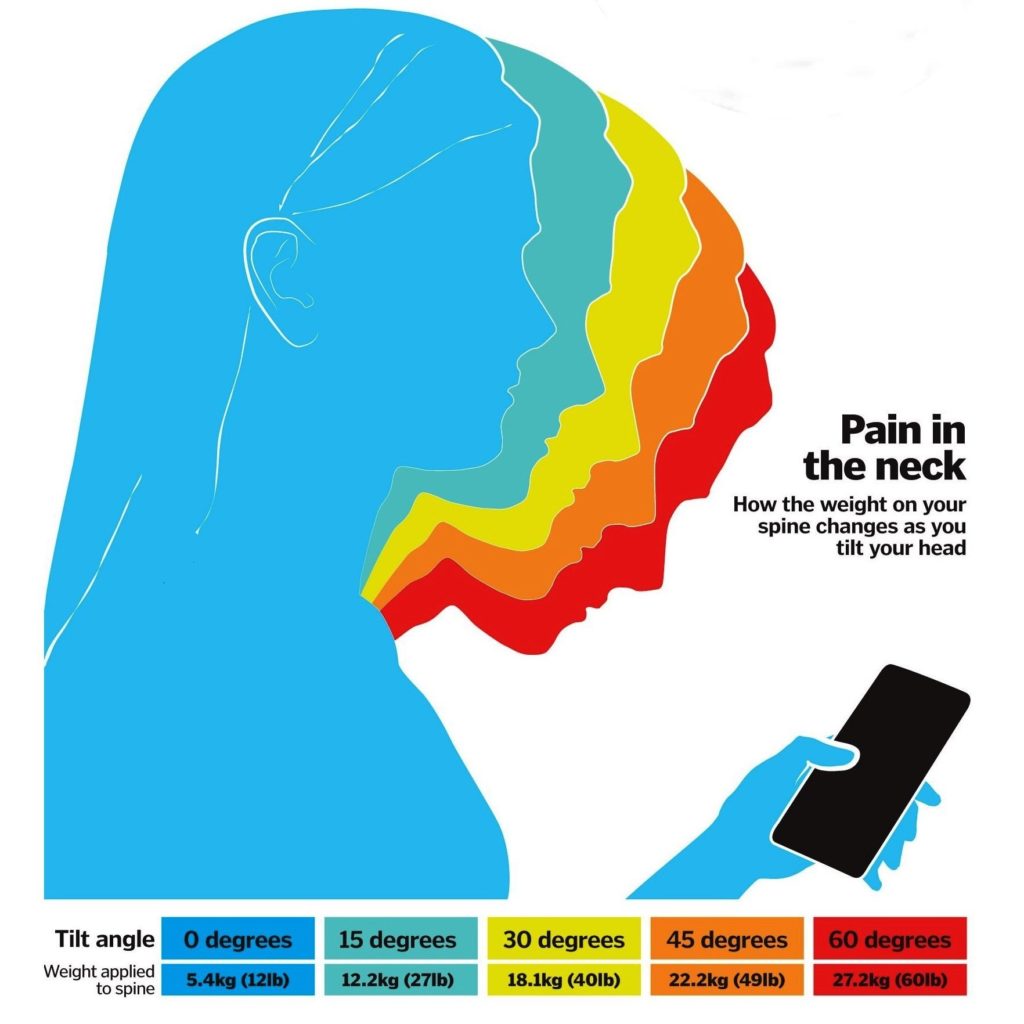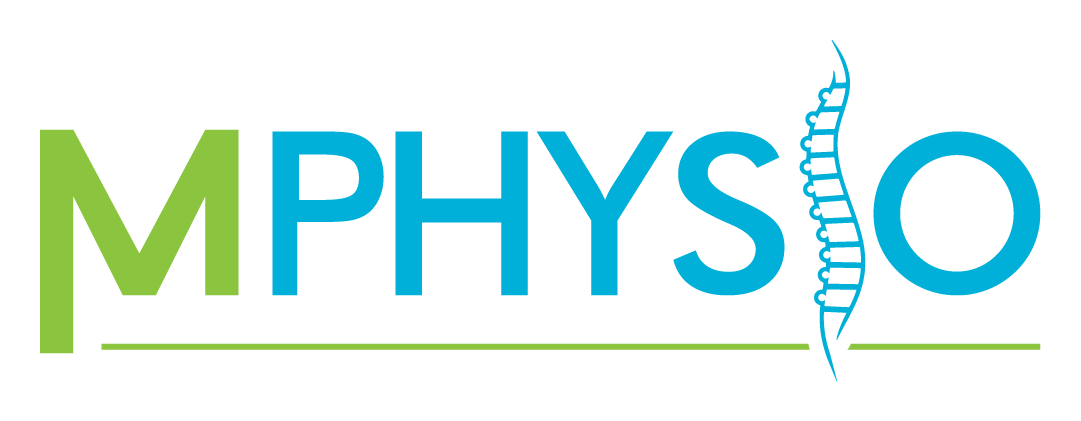Blog
Tech Neck: Is texting causing your neck and shoulder pain?
What is tech neck
Tech neck (also known as text neck) is a term that describes pain typically experienced in the neck and shoulder regions due to prolonged downward and forward posture of the head from using hand-held devices. These can include mobile phones, tablets, laptops or video game devices.
What causes text neck syndrome
Whilst using a hand-held device, your head most likely goes into a forward and downward position.
The human head weighs about 5.5 kg on average. Every 15 degrees the head tilts forwards, the weight of the head, on the spine, increases by about 6.5 – 7 kg. This means, if your head is tilted forward by 45 degrees, the weight of your head on your spine would be more than 20 kg. This places unwanted force through the joints, ligaments, and nerves of your neck.

How it can affect you
When you have unwanted stress on the joints, ligaments, and nerves of your neck, your muscles will have to work harder than normal. Over time, this can cause overuse/strain in the neck.
Have you noticed any of the following symptoms? You may be suffering from tech neck.
- Neck stiffness
- Neck pain
- Headache
- Muscle weakness
- Shoulder pain
- Low back pain
Tech neck exercises
General retractions
- In standing, place a pillow behind your back, against the wall.
- Imagine your head being a filing cabinet.
- Push the drawer back in (place fingers on the chin, and push onto the chin)
- Keep the head in a straight line. Avoid tilting the head up or down.
- Very important to keep the neck and shoulder muscles relaxed
- Maintain the pressure for 20 seconds
- Perform 4 repetitions of 20-second holds, 4 times per day (16 in total).
General range of movements of the neck
- In sitting or standing, move your neck slowly through different motions (bending forwards, backwards, tilting the head side to side, turning the head).
- Ensure you stay within limits of your symptoms.
Stretching the upper trapezius
Tightness in the upper trapezius is seen commonly in cases of tech neck and can contribute to headaches. It is imperative that we increase the length of this muscle.
Watch this video to find out how to stretch the upper trapezius:
Whilst stretching can help relieve tightness of your shoulders and neck, strengthening has been shown to be crucial in managing pain.
The upper trapezius muscle is often “tight” due to compensation for weakness in other muscles. These may be your postural muscles, which include the middle, lower trapezius, rotator cuff muscles and the serratus anterior muscles. As you experience tech neck, you might find yourself also suffering from not only neck pain, but also shoulder and back pain.
Below are some strategies to help you increase the strength of these postural muscles.
Theraband resisted rowing for middle and lower trapezius strengthening:
Push up plus for Serratus anterior strengthening:
Prevent tech neck
Avoiding the forward head posture remains one of the main preventative measures of tech neck.
Other strategies may include avoiding excessive usage of hand-held devices and taking frequent breaks in between positions.
Positioning the device at an appropriate height will help with reducing the stress on your upper body; this can be done by raising the screen of your device to eye level.
Check out this blog post that we have prepared earlier to learn more about the ideal sitting posture: https://mphysio.au/correct-sitting-posture/
Tech neck treatment
For most cases of tech neck, joint mobilisation, stretching, trigger point therapy and/or acupuncture/dry needling can be performed.
The exercises listed above are good ways to improve the strength of your postural muscles. Continuation and progression of exercises are important to facilitate maintenance and further improvement of your muscular strength.
Pain medication is another modality of treatment for tech neck.
Consult a physiotherapist to help you manage your condition.

